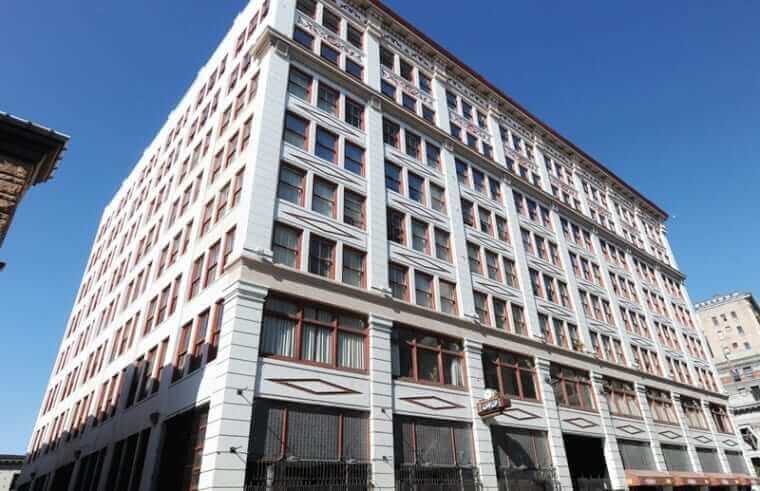
By Alison Gross, Daintree Advisory

The 2020 urban exodus of businesses and workforce participants has left cities with a glut of empty commercial spaces, ranging from retail to offices, restaurants and hospitality. Landlords and municipalities are left with empty spaces, and the resultant loss of rental income and various streams of tax revenues.
The problem is obvious. What is the solution? Adaptive Reuse.
Adaptive Reuse is a global real estate phenomenon; from turn-of-the-century warehouses to castles to train stations, developers and investors have tapped into enormous value from idle building stock.
What is Adaptive Reuse?
-
- Existing structure: While adaptive reuse projects may involve some level of new construction or an expansion/addition of space, they always start with an existing structure.
- Functional and/or economic obsolescence: All adaptive reuse projects commence with a property for which the old use is no longer productive or economically viable, and the tenants have left.
- Change of use: The project/property must involve a repurposing of a prior structure and use, not a mere re- tenanting with tenant improvements.
- Economic viability: The project/property must pass the ultimate test of highest and best use. Not only does the reuse need to be physically possible and legally permissible; it also has to be economically viable. Local government incentives may be necessary to make a project economically viable.
In their 2018 Commercial Real Estate Insights Report, the Institute of the Certified Commercial Investment Member (CCIM) estimated that adaptive reuse projects constitute between 1 percent and 2 percent of all commercial real estate space in the U.S. The report concludes that the figure would likely double over the next five years, to up to 4 percent, largely due to retail closings, as well as the impact of e-commerce, making many such properties unproductive.
Clearly, that estimate did not contemplate the impact COVID-19 would have on urban properties, or the inherent resiliency of cities to respond creatively.
The economic downturn caused by the pandemic has further exacerbated the retail closings and added hotel closings and redundant office buildings to the list of empty buildings in American cities. Now, Adaptive Reuse not only competes effectively with new construction, it could be the answer to commercial real estate owner's empty retail and office space, help solve a housing crisis, and provide new jobs. These uninhabited buildings can be converted to residential and lower income housing.
Adaptive Reuse can be 15-20 percent cheaper and faster than new construction for projects without environmental issues in cities that have sufficiently evolved their zoning and building codes to accommodate it. The challenge for developers is the permitting, engineering, and approval costs. There needs to be partnership with city government to provide proactive adjustments to zoning ordinances to provide for allowances needed to encourage Adaptive Reuse as part of city economic development.
Adaptive Reuse is a strategy which will require:
-
- City zoning review and change
- Low interest rates for leverage
- Tax incentives offered by federal and municipal governments
New York City, like other urban centers, has been hit hard in its commercial districts. In a January 2021 article for City Limits, Rafael Cestero writes: "The damage caused by the emptying of offices, a stark drop in tourism that's shaken the hotel industry, and the closure of many retail stores is more significant than many experts predicted earlier in the [Pandemic] crisis." He concludes, "As we consider a program to convert empty office space and hotels to housing, we should rely on data to help guide our policies, allowing us to have the right tools available should we need to deliver a program that can effectively and efficiently convert empty office space and hotels into housing in Midtown Manhattan and throughout our city."
This data-based approach can be designed to focus on i) preventing property foreclosures, which will benefit owners and lenders, and ii) generating tax revenue, to support the cities already burdened with increased unemployment and economic contraction.
Bloomberg City Lab notes that occupancy rates in New York City hotels, tied to tourism and corporate travel, have plunged below 10%. Commercial broker CBRE found that just 10% of Manhattan workers had returned as of Sept 2020. Some companies have pivoted their office workers to remote working so successfully that they do not plan to have their full workforce return to office buildings in the future, preferring to look towards a smaller footprint of conference rooms for client meetings while keeping their office staff working remotely.
In his 2021 New York State of the State address, Governor Andrew Cuomo called for converting vacant commercial space to supportive and affordable housing. Turning old office space into new affordable housing units that are located in high-employment areas of the city that also has existing good transportation systems would help upward mobility in city with one of the highest costs of living in the United States. The neighborhoods of Midtown Manhattan, the Garment District, and Flatiron South are ideal areas in which focus on this type of residential renovation.
The change from office to residential properties isn't that unusual. According to a RENTCafe study, a record 96,000-plus units nationwide have been created by transforming 778 schools, factories, offices or other nonresidential space into new homes, with 23% including units affordable to low-income renters.
Adapting and repurposing commercial real estate to suit new and different needs will be a key focus for investors, owners and operators in the post pandemic recovery of cities. The Public/Private partnerships needed and commitment by the cities to adapt and update obsolete zoning will be critical to its success. This collaboration will require visionary thinking and strategic new capital investment. Real estate owners and operators must be creative, but they cannot do it alone.
"Quoted Text goes here... (optional) ."
Additional text goes here ... (delete the below text and add more as needed).
Lorem ipsum dolor sit amet, eu per legimus referrentur. Ius ne viris repudiare, nominavi sententiae eos in. Et duo salutatus consequat, et epicurei euripidis mei. Sit nominavi deleniti rationibus ea, has ex essent invidunt. Sit debet singulis interesset et, in vel legere possit patrioque. Mel partem corrumpit id, ei eam quod noluisse.Mei elit ubique accumsan ex, quo ut etiam facete utroque. Usu eu ponderum sapientem similique, quidam verterem quo id. Laoreet definitionem est ea. Cu mea facer dicam, vocent ceteros per ad, eam nonumes mentitum sadipscingne.
Alienum phaedrum torquatos nec eu, vis detraxit periculis ex, nihil expetendis in mei. Mei an pericula euripidis, hinc partem ei est. Eos ei nisl graecis, vix aperiri consequat an. Eius lorem tincidunt vix at, vel pertinax sensibus id, error epicurei mea et. Mea facilisis urbanitas moderatius id. Vis ei rationibus definiebas, eu qui purto zril laoreet. Ex error omnium interpretaris pro, alia illum ea vim.
